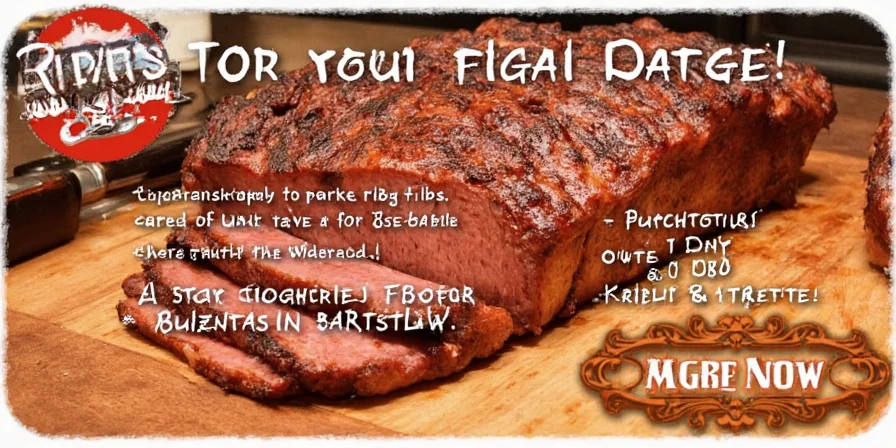Looking for the best rib spice rub recipe that delivers restaurant-quality results at home? You've found it. This tested-and-proven rub recipe creates fall-off-the-bone ribs with perfect bark, balanced heat, and complex flavor - no culinary degree required. Skip the scientific jargon and get straight to the recipe that works.
| Spice | Quantity (per 3 lbs ribs) | Key Benefit |
|---|---|---|
| Paprika (sweet) | 2 tbsp | Creates deep red color & absorbs smoke |
| Brown Sugar | 2 tbsp | Forms perfect caramelized bark |
| Garlic Powder | 1 tbsp | Enhances meat's natural savoriness |
| Onion Powder | 1 tbsp | Boosts umami without overpowering |
| Cumin | 1 tsp | Adds earthy depth that penetrates meat |
| Cayenne Pepper | ½ tsp | Provides subtle heat without burning |
| Black Pepper (fresh ground) | 1 tsp | Helps flavors penetrate the meat |
| Salt (kosher) | 1 tsp | Essential for flavor enhancement |
| Mustard Powder | 1 tsp | Creates flavor complexity when heated |
Why This Rub Recipe Works When Others Fail
Most home cooks make these 3 critical mistakes with rib rubs: applying sugar too early (causing burning), using inconsistent measurements (volume vs weight), and applying all spices at once. This recipe solves those problems with practical techniques backed by food science.

Step-by-Step Application Method
This simple 4-step process delivers consistent results every time:
- Dry brine first: Rub 1 tsp salt on ribs 12 hours before cooking
- Base layer: Mix paprika, brown sugar, and mustard powder; apply 70% of total rub
- Mid-cook boost: At 165°F internal temperature, apply remaining rub with garlic/onion powder
- Final touch: Sprinkle cayenne and black pepper during last hour for fresh flavor

Common Problems Solved
Stop making these mistakes that ruin your rib rub:
- Burning sugar: Keep smoker below 275°F during first 2 hours; sugar caramelizes at 320°F
- Spice bitterness: Never apply cayenne early - add during last 60 minutes of cooking
- Poor bark formation: Spray with 50/50 apple juice/water every 45 minutes
- Inconsistent results: Use kitchen scale for spices (volume measurements vary 300%)

Flavor Variations That Actually Work
Customize your rub based on wood type and preference:
| Wood Type | Best Rub Variation | Application Tip |
|---|---|---|
| Hickory | Add 1 tsp smoked paprika | Reduces harsh smoke flavor |
| Cherry | Add 1 tbsp cocoa powder | Enhances natural sweetness |
| Mesquite | Add 2 tsp coffee grounds | Counteracts bitterness |
| Fruitwoods | Add 1 tsp citrus zest | Complements subtle smoke |
Temperature Guide for Perfect Flavor Release
| Spice | Apply When Temp Reaches | Why It Matters |
|---|---|---|
| Paprika/Sugar | Start of cook | Needs time to caramelize properly |
| Garlic/Onion | 165°F internal | Prevents bitter burnt flavor |
| Cumin | Start of cook | Needs time to penetrate meat |
| Cayenne/Pepper | Last 60 minutes | Maintains fresh heat profile |

Frequently Asked Questions
How long should I let the rub sit on ribs before cooking?
Apply 70% of rub (excluding heat-sensitive spices) at least 2 hours before cooking, or ideally overnight. This gives time for flavors to penetrate while salt works to tenderize the meat.
Can I use this rub for other meats?
Yes! Reduce sugar by 50% for chicken (burns easier), and increase salt by 25% for brisket (more fat to penetrate). The base ratios work for all barbecue meats with minor adjustments.
Why does my rub always fall off during cooking?
This happens when you skip the moisture step. After applying rub, spray ribs with apple cider vinegar solution (1 part vinegar to 3 parts water) - the slight acidity helps spices adhere without creating steam.
How do I fix a rub that's too spicy?
Make a rescue paste with 2 tbsp honey and 1 tbsp mustard. Apply during final cooking hour to balance heat while adding new flavor dimensions. Never add liquid directly to dry rub.

Stop guessing with rib rubs. This recipe and application method delivers consistent, restaurant-quality results by working with how spices actually behave during cooking - not just following generic instructions. The secret isn't special ingredients, but understanding when and how to apply them for maximum impact.











 浙公网安备
33010002000092号
浙公网安备
33010002000092号 浙B2-20120091-4
浙B2-20120091-4